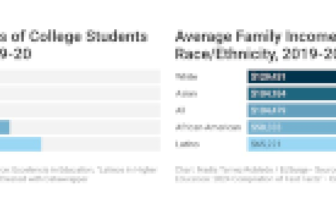Friday 5: Online learning’s evolution

[ad_1]
Key points:
Online learning has limitless potential for students and teachers, offering the ability to learn from any location and at all times of the day. Let’s take a look at some of the latest online learning trends:
Is online learning really effective?
The short answer: Yes. Flexible, hybrid learning is key to student success. Schools should reimagine the learning processes and leverage in-person and hybrid learning to help students achieve the best possible results. The potential for innovation and student engagement are only scratching the surface when it comes to the advantages of online learning. Having many new, effective tools in educators’ toolboxes, it’s time to cast aside conventional processes and rethink the way we provide services to, and support, our students. Take the first steps toward this innovation.
What are the advantages and disadvantages of online learning?
A student’s motivation in school is a key driver of their academic success. Yet, the demanding nature of high school classes, mixed with a teenager’s natural craving for independence and individual identity, can stand in the way of that motivation. COVID-19 took a toll on student motivation, and 80 percent of educators are still feeling the effects. Following the rapid and sudden shift to online learning, parents and educators remain concerned about keeping online students motivated and engaged. In fact, challenges around online student engagement remain among the most-discussed disadvantages of online learning. As we move past the pandemic and rethink the role of online education, it’s vital to education reform that teachers remain focused on fostering student motivation.
What are the challenges of online learning?
Many often wonder what happens to students’ social skills when they are enrolled in online learning programs–after all, students don’t have in-person interactions with their peers through this learning modality. But students enrolled in online learning don’t have to miss out on social opportunities–in fact, it’s easier to facilitate balanced social growth than previously believed. Fortunately, there are plenty of ways for students to foster social connections during online schooling, and there are strong social online learning examples available. Kids who are enrolled in online learning can still connect with their peers in virtual breakout rooms and should be given every opportunity to meet up informally during the school day. Learn how to foster such connections.
How can online learning help you?
There are many online learning platforms for students to connect them with engaging and motivating learning experiences. Online learning can help students who are sick for long periods and not able to be physically in school. It also can connect students to learning opportunities not available in their home districts, such as specialized language learning or advanced courses with no local instructors. Online learning also can help families stay or return to their local public schools–a complex challenge that requires a multifaceted approach. Families want options for their children’s education, and these options must be of high quality. Partnering with an experienced provider to offer high-quality online learning is one way traditional schools can give students more options—and it’s an important strategy for attracting and retaining families.
What is the future of online learning?
District virtual schools are dynamic alternatives to conventional schooling, ripe for transformation to cater to the diverse needs of 21st-century learners. It’s time to transform district virtual schools from pandemic stop-gaps into pioneering models of 21st-century learning. The sustainability of district virtual schools hinges on whether they can evolve beyond the current versions we see in most districts. Here’s how to ensure online learning is innovative, impactful, and long-lasting.

[ad_2]
Source link







